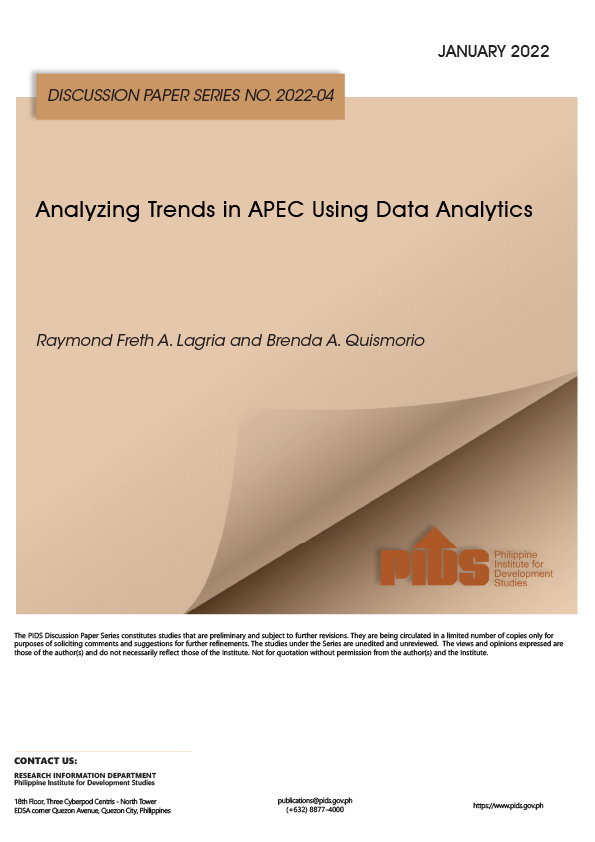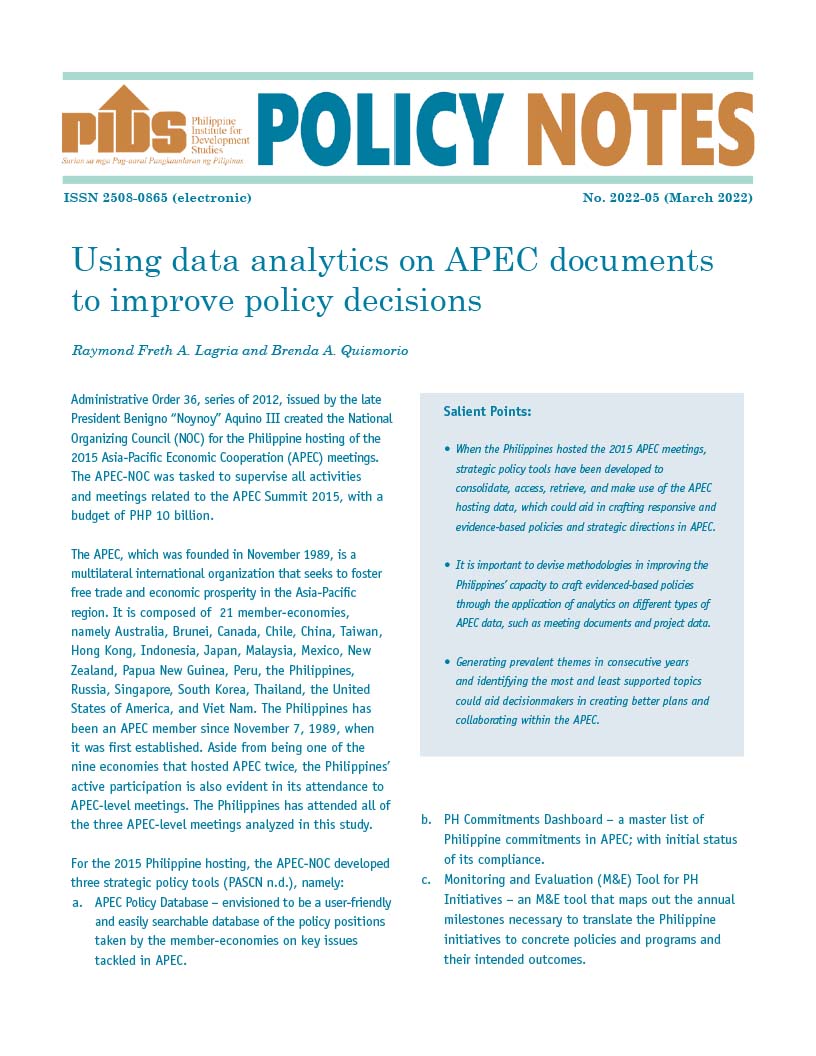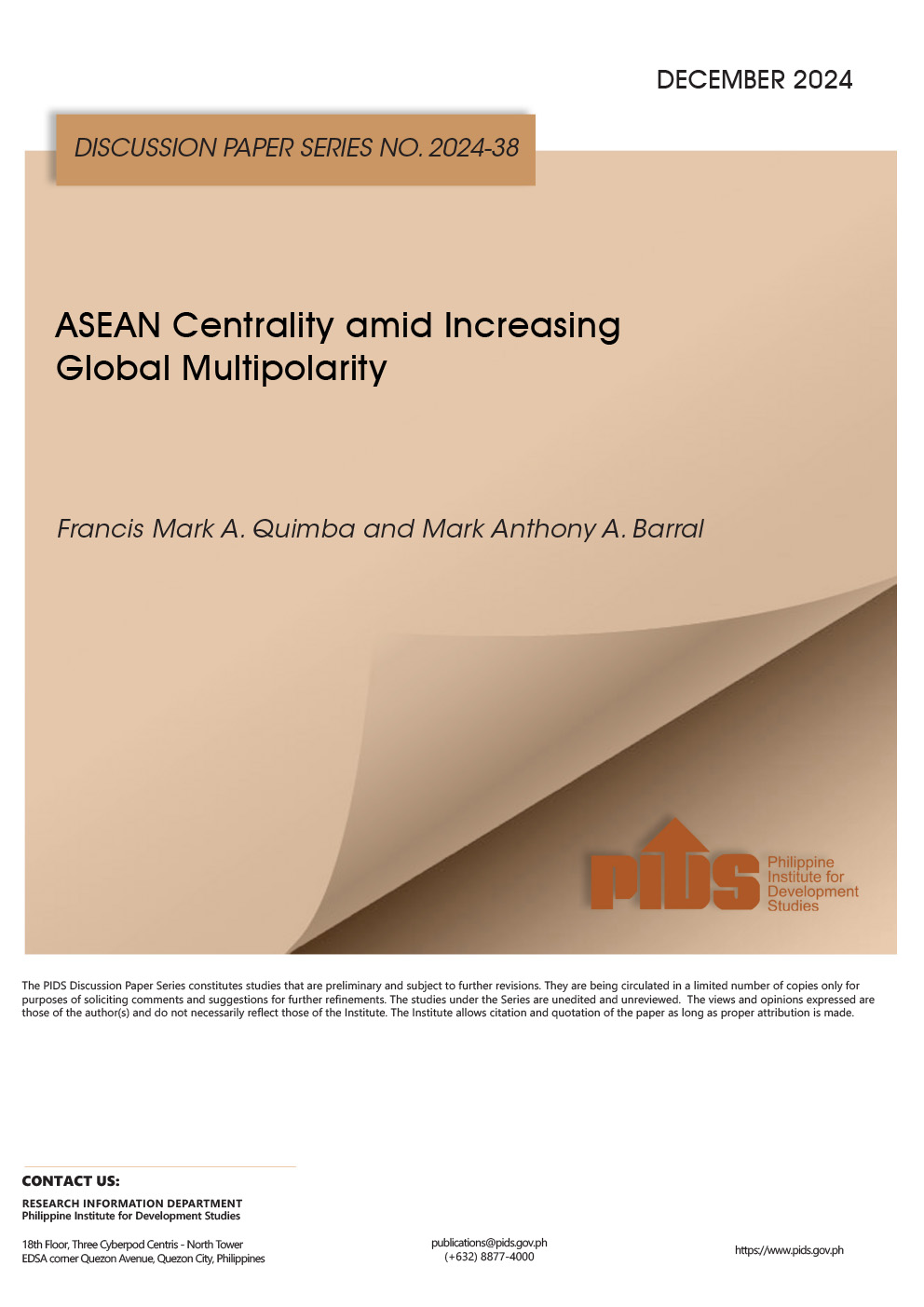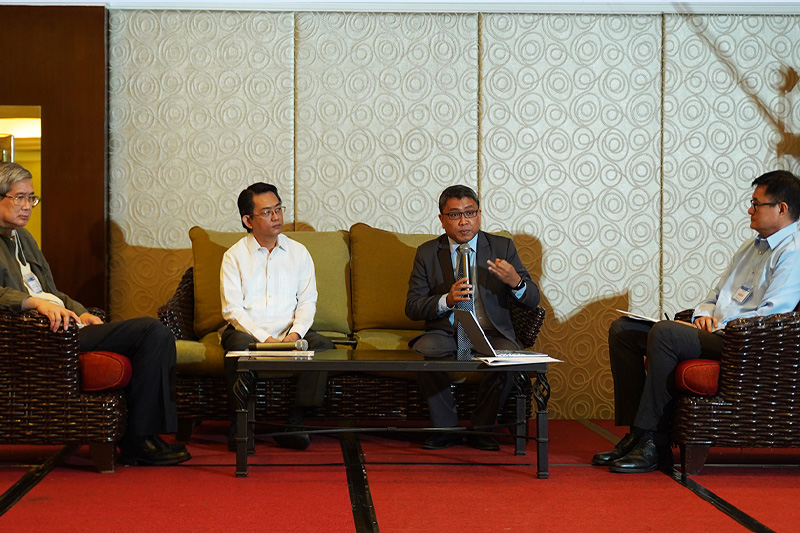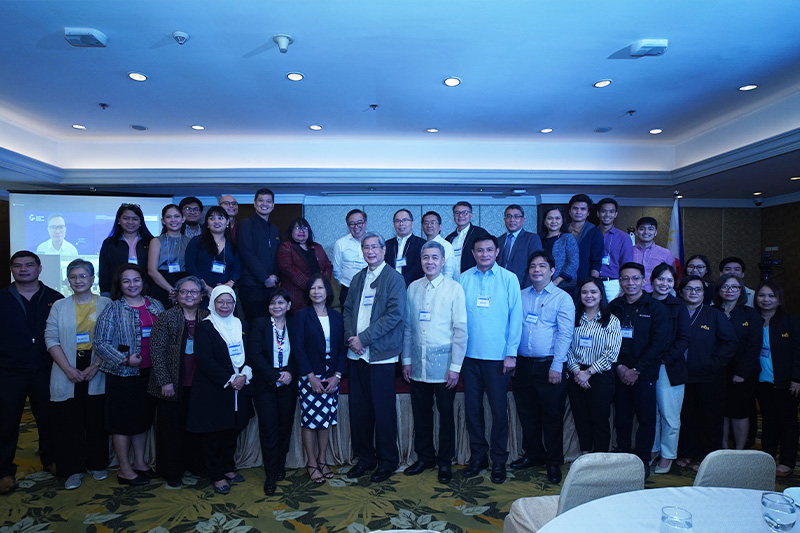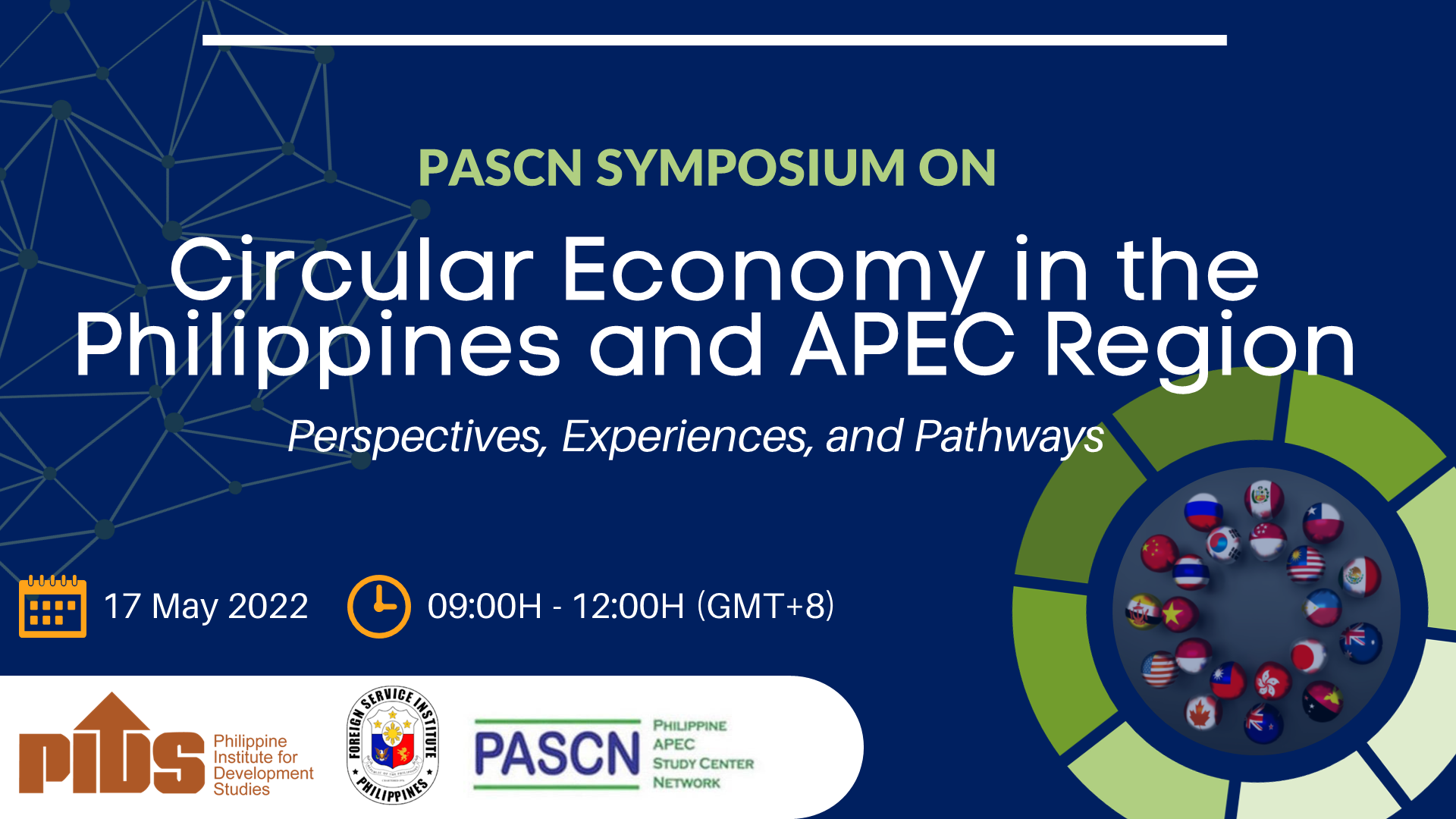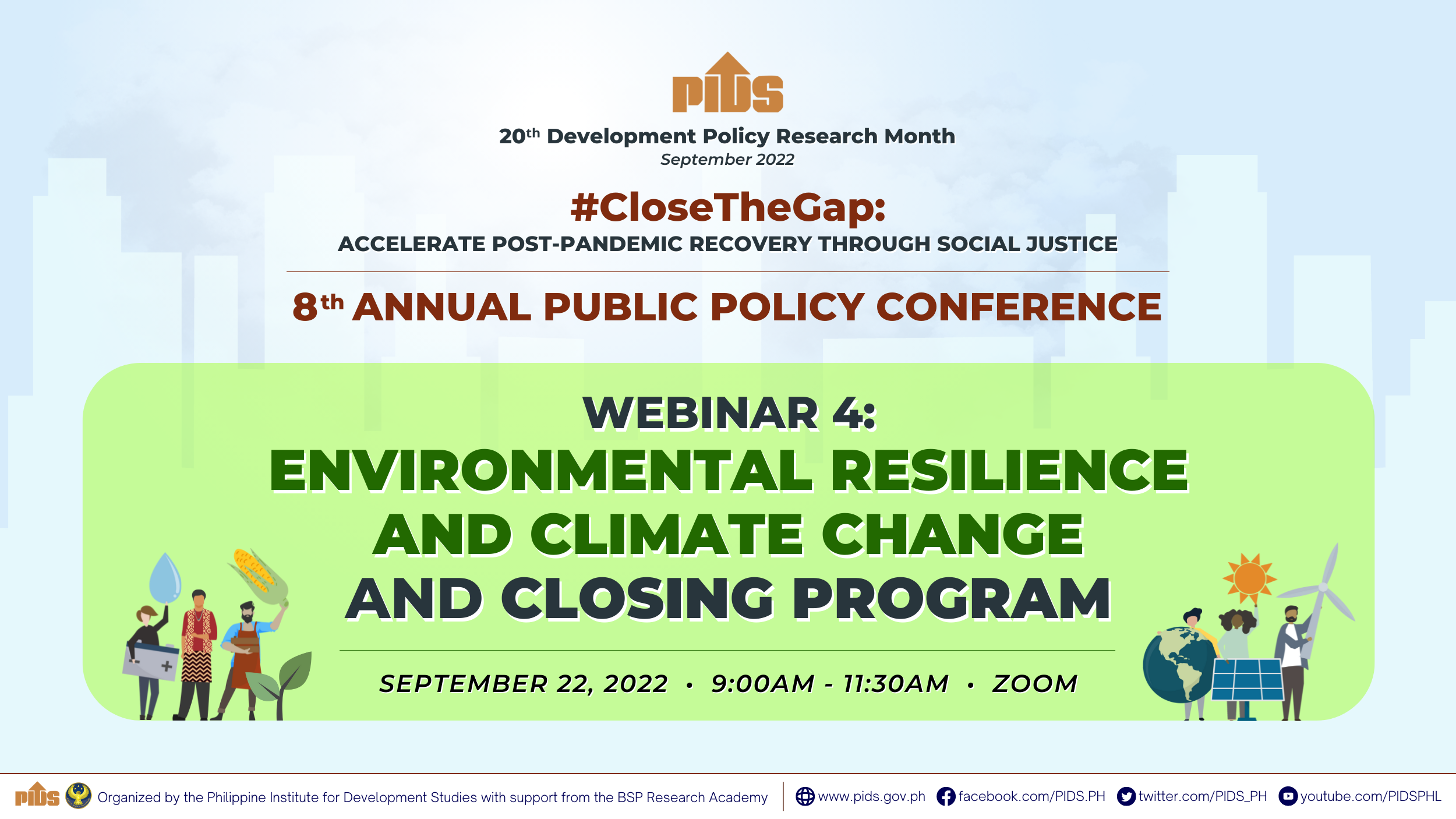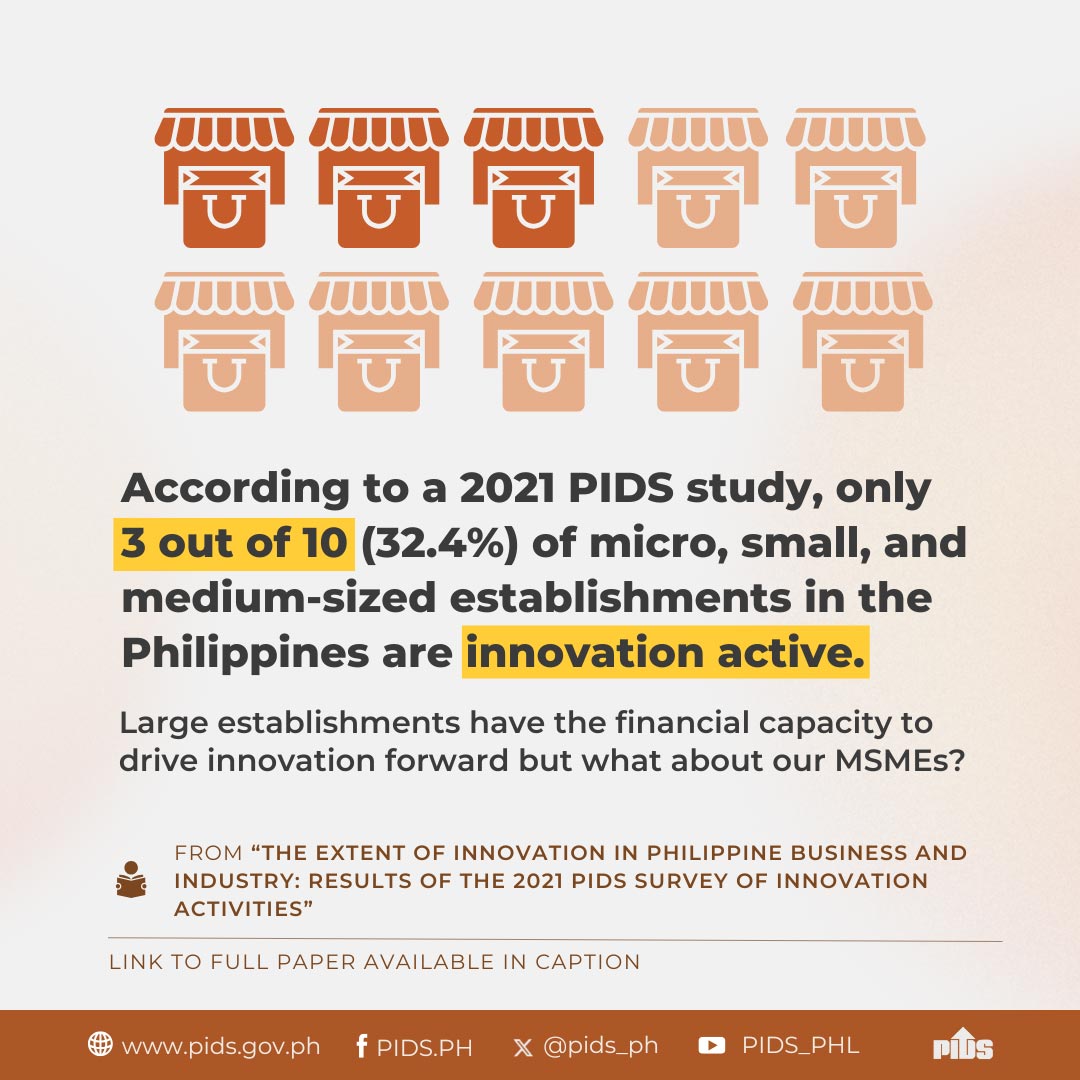A paper released by state think tank Philippine Institute for Development Studies (PIDS) was delivered this week at the second ministerial meeting of the Asia Pacific Economic Community (APEC).
Written by Dr. George Manzano and Ms. Shanti Aubren Prado, PIDS consultants, Evaluation of the APEC Environmental Goods Initiative: A Dominant Supplier Approach assesses the list of 54 environmental goods and services that the APEC promised in 2012 to liberalize by the end of this year. It presents evidence to guide APEC countries in implementing its initiative by identifying specific goods from the list that can be considered for sectoral liberalization, ranked by the measure of their supply predominance and comparative advantage in the APEC.
Environmental goods and services (EGS) are a public good subcategory, referred to by the European Commission as “products, services and technologies that contribute to green growth, environmental protection, climate action and sustainable development”. In 2012, the APEC member-states agreed to reduce tariffs to at least five percent. The hope is that by bringing down the barriers within the APEC, there will be a subsequent increase in trade for EGs, more green jobs will be generated, and a more environmentally sustainable growth will be pursued.
“Reducing trade barriers in environmental goods and services (EGS) would make it cost-effective for industries to adopt environmental technologies,” the authors explain. The reduction will make intra-APEC business and trade of EGS more productive and profitable, and will make it easier to help APEC members address climate change challenges.
But Manzano and Prado of the University of Asia and the Pacific underline that it is important that the APEC undertake a more nuanced approach. Liberalizing all of the 54 identified EGSs may not yield uniform benefits. Furthermore, member-countries may be less encouraged to participate if there is unchecked spillover benefits to nonmember countries who maintain trade barriers for EGS
To prevent “free-riders”, Manzano and Prado recommend that APEC members focus on reducing tariffs for EGS where APEC members have considerable comparative advantage. The authors used the predominant supplier approach in their study to identify which EGS to consider for APEC-wide liberalization.
The results show that APEC has a dominant supplier role in renewable energy and clean technology production. These are followed by waste water management and potable water treatment, management of solid and hazardous waste and recycling systems, and natural risk management.
"The policy objective is to determine the cutoff level.” There is no “clear-cut answer” to determining the optimal APEC predominance supply benchmark and it will most likely be determined through a political process. The authors do recommend that policymakers in APEC consider that, “it is rational to set the ceiling of the trade negotiations at the level where APEC principally supplies 60 per cent of exports.”
The paper concludes that a nuanced implementation of liberalizing the trade of EGS will be good for the earth, good for business, and good for the economic growth of APEC member-states.
Written by Dr. George Manzano and Ms. Shanti Aubren Prado, PIDS consultants, Evaluation of the APEC Environmental Goods Initiative: A Dominant Supplier Approach assesses the list of 54 environmental goods and services that the APEC promised in 2012 to liberalize by the end of this year. It presents evidence to guide APEC countries in implementing its initiative by identifying specific goods from the list that can be considered for sectoral liberalization, ranked by the measure of their supply predominance and comparative advantage in the APEC.
Environmental goods and services (EGS) are a public good subcategory, referred to by the European Commission as “products, services and technologies that contribute to green growth, environmental protection, climate action and sustainable development”. In 2012, the APEC member-states agreed to reduce tariffs to at least five percent. The hope is that by bringing down the barriers within the APEC, there will be a subsequent increase in trade for EGs, more green jobs will be generated, and a more environmentally sustainable growth will be pursued.
“Reducing trade barriers in environmental goods and services (EGS) would make it cost-effective for industries to adopt environmental technologies,” the authors explain. The reduction will make intra-APEC business and trade of EGS more productive and profitable, and will make it easier to help APEC members address climate change challenges.
But Manzano and Prado of the University of Asia and the Pacific underline that it is important that the APEC undertake a more nuanced approach. Liberalizing all of the 54 identified EGSs may not yield uniform benefits. Furthermore, member-countries may be less encouraged to participate if there is unchecked spillover benefits to nonmember countries who maintain trade barriers for EGS
To prevent “free-riders”, Manzano and Prado recommend that APEC members focus on reducing tariffs for EGS where APEC members have considerable comparative advantage. The authors used the predominant supplier approach in their study to identify which EGS to consider for APEC-wide liberalization.
The results show that APEC has a dominant supplier role in renewable energy and clean technology production. These are followed by waste water management and potable water treatment, management of solid and hazardous waste and recycling systems, and natural risk management.
"The policy objective is to determine the cutoff level.” There is no “clear-cut answer” to determining the optimal APEC predominance supply benchmark and it will most likely be determined through a political process. The authors do recommend that policymakers in APEC consider that, “it is rational to set the ceiling of the trade negotiations at the level where APEC principally supplies 60 per cent of exports.”
The paper concludes that a nuanced implementation of liberalizing the trade of EGS will be good for the earth, good for business, and good for the economic growth of APEC member-states.

